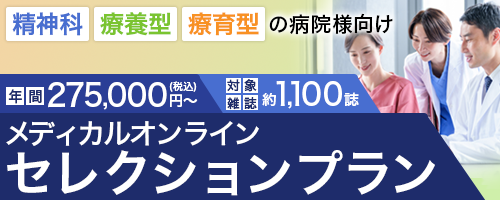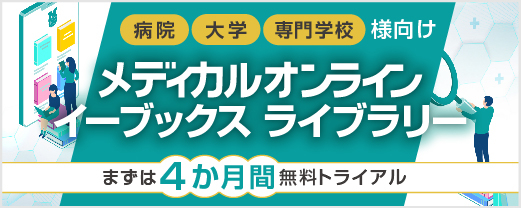アブストラクト
Japanese
| Title | 舌ブラシ先端形状による細菌除去および洗浄後のブラシの残留細菌数の違い |
|---|---|
| Subtitle | 短報 |
| Authors | 伊藤加代子1), 前川知樹2), 濃野要3), 井上誠1,4) |
| Authors (kana) | |
| Organization | 1)新潟大学医歯学総合病院口腔リハビリテーション科, 2)新潟大学大学院医歯学総合研究科高度口腔機能教育研究センター, 3)新潟大学医歯学総合病院予防歯科, 4)新潟大学大学院医歯学総合研究科摂食嚥下リハビリテーション学分野 |
| Journal | 日本摂食嚥下リハビリテーション学会雑誌 |
| Volume | 24 |
| Number | 2 |
| Page | 170-176 |
| Year/Month | 2020 / 8 |
| Article | 報告 |
| Publisher | 日本摂食嚥下リハビリテーション学会 |
| Abstract | 「要旨」 【目的】舌ブラシには, 歯ブラシのような植毛タイプや, アーチワイヤー状のタイプ, 細かいループ状のナイロン毛が植毛されたナイロンブラシタイプなどいろいろな形状がある. ナイロンブラシは舌苔が厚い場合に有効である一方, 使用後に水洗をしても汚れが落ちにくかったり, 細菌が繁殖しやすくなったりする恐れがある. そこで, ナイロン毛のループ部分をカットしたブラシを作製し, 細菌の除去効果を従来のブラシと比較した. さらに, 流水下での洗浄によるブラシに付着した細菌の残留について比較した. 【方法】ナイロン毛がループ状になっているループブラシ(W-1ブラシ, SHIKIEN)と, ループ部の一部をカットしたループカットブラシを使用した. 各ブラシでBHI寒天培地上に播種したS. aureusを擦過し, 除去した細菌数を比較した. また, 洗浄方法を検討するため, 洗浄なし, 手でブラシを擦らず流水下に10秒おいたブラシ, 流水下でブラシを0, 5, 10, 30秒擦ったブラシに付着していた細菌数を比較した. 【結果】ループブラシおよびループカットブラシで除去した細菌数の中央値はそれぞれ2.0×1011cfu/mL, 2.1×1011cfu/mLで, 統計学的有意差は認められず, 細菌の除去能力は同等であった. また, ループブラシ, ループカットブラシのいずれも, 洗浄前と比較して, 5, 10, 30秒の手洗いで有意に付着細菌数が減少していた. 特にループカットブラシでは, 5秒時に99.9%細菌数が減少し, 10秒時にはさらに減少していた. 10秒時と30秒時では統計学的有意差は認められなかった. したがって, ループカットブラシは, ループブラシと同様な細菌除去効果をもちながらも, 洗浄後に付着している細菌数が少なく, 感染源となる可能性が低いこと, また, 5秒間の流水下での洗浄で99.9%の細菌が除去できる可能性があることが示された. |
| Practice | 医療技術 |
| Keywords | 舌ブラシ, 舌苔, 細菌数, tongue coat, tongue brush, bacteria |
English
| Title | Influence of the Tip Shape of a Tongue Brush on Removing Bacteria from a Culture Medium and Residual Bacteria after Cleaning |
|---|---|
| Subtitle | |
| Authors | Kayoko ITO1), Tomoki MAEKAWA2), Kaname NOHNO3), Makoto INOUE1,4) |
| Authors (kana) | |
| Organization | 1)Oral Rehabilitation, Niigata University Medical and Dental Hospital, 2)Research Center for Advanced Oral Science, Graduate School of Medical and Dental Sciences, Niigata University, 3)Preventive Dentistry, Niigata University Medical and Dental Hospital, 4)Division of Dysphagia Rehabilitation, Niigata University Graduate School of Medical and Dental Sciences |
| Journal | The Japanese Journal of Dysphagia Rehabilitation |
| Volume | 24 |
| Number | 2 |
| Page | 170-176 |
| Year/Month | 2020 / 8 |
| Article | Report |
| Publisher | The Japanese Society of Dysphagia Rehabilitation |
| Abstract | [Abstract] Tongue cleaners come in various shapes, such as nylon brushes like a toothbrush, scraper type, and brushes implanted with fine nylon looped bristles. Although nylon looped brushes are effective when the tongue coating is thick, there is a possibility that contamination remains even after the brush seems to be clean. We therefore compared the bacterial removal effect of nylon looped brushes with the one of brushes in which part of the loops was cut (loop-cut brush). We also evaluated the amount of bacterial residue after washing by hand for 0, 5, 10, and 30 s under running water. A looped bristle brush (W-1 brush, SHIKIEN) and a loop-cut bristle brush were used to scrape the surface of brain heart infusion (BHI) agar medium seeded with Staphylococcus aureus, and the number of bacteria removed by the two brushes was compared. Additionally, to examine different methods for cleaning the brushes, we compared the number of bacteria remaining on the brushes after washing by hand under running water for 0, 5, 10, and 30 s, and placing the brush under running water alone for 10 s. There was no statistically significant difference between the median number of bacteria removed by the looped bristle brush (2.0×1011 cfu/mL) and the loop-cut bristle brush (2.1×1011 cfu/mL), indicating that there is no difference in the bacterial removal ability between these two brushes. Investigation of the cleaning method revealed that the number of bacteria adhering to the brushes was significantly decreased after washing by hand for 5, 10, and 30 s when compared with no cleaning for both the looped bristle brush and the loop-cut bristle brush. The bacterial count of the cut bristle brush decreased by 99.9% after 5 s of washing by hand, and removed further after 10 s of washing. There was no statistically significant difference between washing by hand for 10 and 30 s for the loop-cut bristle brush. The loop-cut bristle brush had fewer bacteria attached after washing by hand than the looped bristle brush, and rubbing for at least 5 s under running water reaches 99.9% bacteria removal. Therefore, the loop-cut bristle brush may be a superior shape because it has a low likelihood of becoming an infection source, and its bacterial removal ability was similar to that of the looped bristle brush. |
| Practice | Medical technology |
| Keywords | tongue coat, tongue brush, bacteria |
- 全文ダウンロード: 従量制、基本料金制の方共に770円(税込) です。
参考文献
- 1) Bunetel L, Tricot-Doleux S, Agnani G, et al:In vitro evalua-tion of the retention of three species of pathogenic microorgan-isms by three different types of toothbrush, Oral Microbiol Immunol, 15:313-316,2000.
- 2) 加我正行:歯ブラシに生きる微生物による汚染について,クリニシアン,50:710-714,2003.
- 3) 三浦宏子,磯貝恵美子,加藤友一,他:歯刷子の細菌汚染に関する研究,口腔衛会誌,38:180-185,1988.
- 4) 佐藤晶子,浜田幸代,糸田川薫,他:歯ブラシの洗滌方法の違いと歯ブラシの汚れの関係,日歯衛会誌,14:56-60,1985.
- 5) Grewal N, Swaranjit K:A study of toothbrush contamination at different time intervals and comparative effectiveness of various disinfecting solutions in reducing toothbrush contami-nation, J Indian Soc Pedod Prev Dent, 14:10-13,1996.
残りの13件を表示する
- 6) Belanger-Giguere K, Giguere S, Belanger M:Disinfection of toothbrushes contaminated with Streptococcus mutans, Am J Dentist, 24:155-158,2011.
- 7) 犬伏順也,妻木浩美,大田洋二郎,他:口腔用スポンジブラシ使用後の洗浄・乾燥が付着菌数におよぼす影響,日摂食嚥下リハ会誌,18:221-228,2014.
- 8) 伊藤加代子,福原孝子,高地いづみ,他:ブラシの形態による舌清掃効果の違いについて,日摂食嚥下リハ会誌,13:77-87,2009.
- 9) 齊藤幸枝,大森みさき,葛城啓彰:生理的口臭の要因に関する研究,日歯周病会誌,44:168-177,2002.
- 10) 大森みさき,宮崎晶子,佐藤治美,他:舌苔を認める者の口臭抑制に対する舌清掃の効果について,日歯周病会誌,47:36-43,2005.
- 11) 上田貴之,須藤るり,渡邉幸子,他:口腔ケア用ジェルを併用した舌清掃による要介護高齢者の舌苔除去効果,老年歯医,27:366-372,2013.
- 12) Yasui M, Ryu M, Sakurai K, et al:Colonization of oral cavity by periodontopathic bacteria in complete denture wearers, Gerodontology, 29:e494-e502,2011.
- 13) Shimizu T, Ueda T, Sakurai K:New method for evaluation of tongue-coating status, J Oral Rehabil, 34:442-447,2007.
- 14) Abe S, Ishihara K, Adachi M, et al:Oral hygiene evaluation for effective oral care in preventing pneumonia in dentate elderly, Arch Gerontol Geriatr,43:53-64,2006.
- 15) 小島 健:舌苔の臨床的研究,日口腔外会誌,31:1659-1678,1985.
- 16) 戸島美和,藤田純子,夏野徹也,他:歯ブラシの細菌汚染とその対策,歯学,80:1405-1414,1993.
- 17) 前山弘美,藤田純子,宮本良子:歯ブラシの乾燥時間について,日歯衛会誌,14:61-65,1986.
- 18) Mehta A, Sequeira PS, Bhat G:Bacterial contamination and decondamination of toothbrushes after use, New York State Dental J, 73:20-22,2007.



